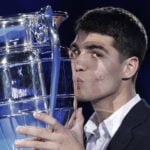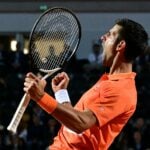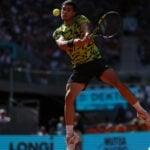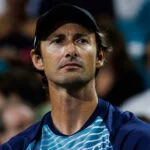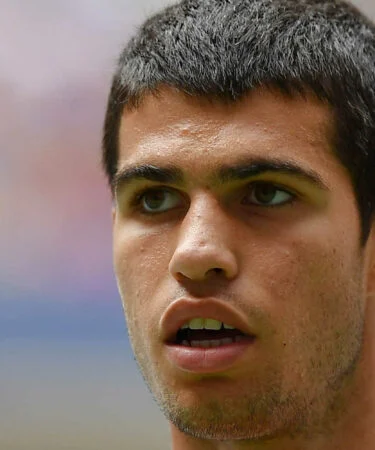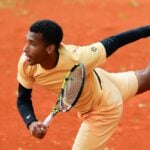Why Carlos Alcaraz is stronger on clay – and getting stronger
If Carlos Alcaraz won his first big successes on hard courts, his potential seems even more immense on clay, as evidenced by his recent successes in Barcelona and Madrid. Explanations.
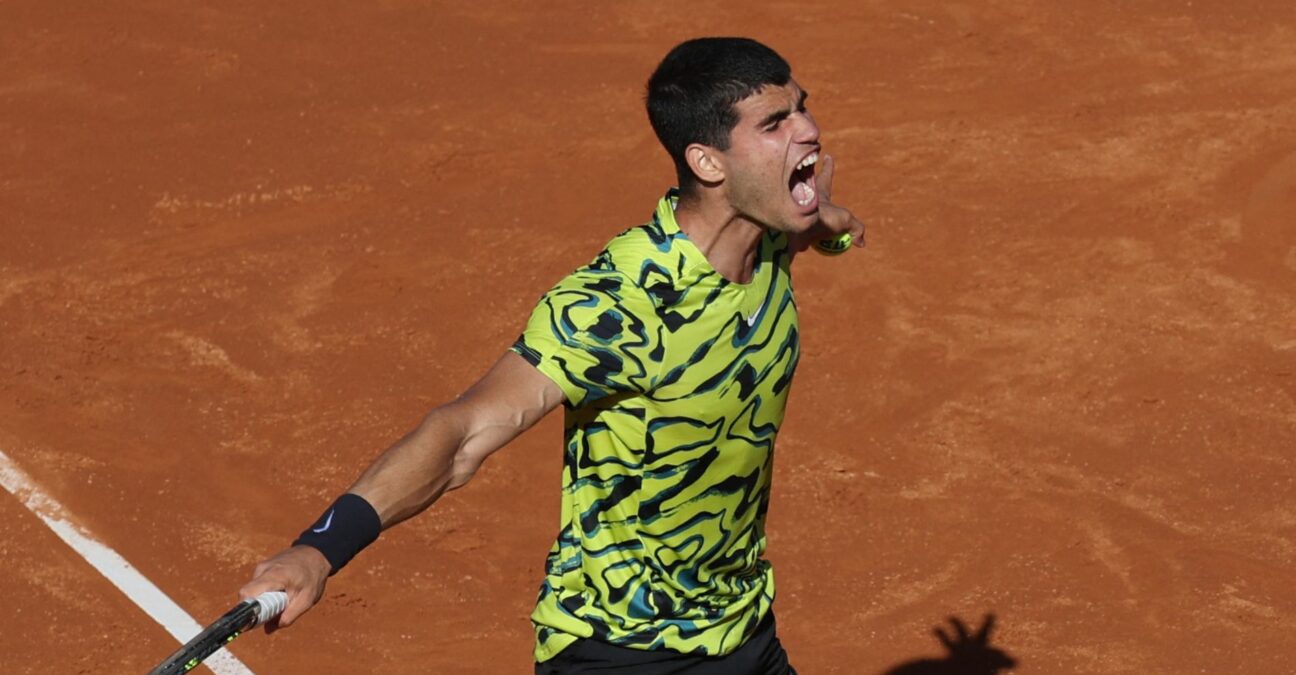 Tennis – ATP 500 – Barcelona Open – Real Club de Tenis, Barcelona, Spain – April 23, 2023 Spain’s Carlos Alcaraz celebrates after winning the Barcelona Open in the final match against Greece’s Stefanos Tsitsipas (AI/Reuters/Panoramic)
Tennis – ATP 500 – Barcelona Open – Real Club de Tenis, Barcelona, Spain – April 23, 2023 Spain’s Carlos Alcaraz celebrates after winning the Barcelona Open in the final match against Greece’s Stefanos Tsitsipas (AI/Reuters/Panoramic)
He somewhat confused us by winning his first Masters 1000 and then his first Grand Slam on hard courts, respectively in Miami and the US Open 2022. And also by declaring himself more comfortable on hard courts, perhaps an additional means, for him, to deflect constant comparisons with Rafael Nadal.
But even if he will not be considered a pure and prolific clay guru (like his illustrious elder) as long as he has not triumphed at Roland-Garros, an analysis of his game nevertheless tends to show that Carlos Alcaraz is even stronger on the terre battue. This is certainly not good news for his rivals. But it is a reality that seems, in any case, to take shape, even if it is not yet fully confirmed by the facts…
Before landing like a tornado on the ATP circuit, the phenomenon from Murcia had won five of his seven titles on the lower level (one Future and four Challengers) on clay. And it was also on this surface that he won the first title of his career on the main circuit in the summer of 2021, at Umag, by dominating Richard Gasquet in the final. He now has seven tournaments on clay (out of ten in all), including the two Madrid Masters 1000 in 2022 and 2023.
During this Madrid tournament, in 2022, “Carlitos” had also achieved a rare and otherworldly double, by defeating in succession Rafael Nadal (in quarters) then Novak Djokovic (in semis). He thereby became the first player to beat the two legends in the same tournament on clay. And the youngest player (just 19 years old) to beat a world number 1 on clay since… Rafael Nadal in 2005, of course.
CARLOS IS NATURALLY AN “ALL-SURFACE” PLAYER. BUT I WILL GIVE HIM A LITTLE ADVANTAGE ON CLAY BECAUSE HE HAS SOME WEAPONS THAT ARE DEADLY ON THIS SURFACE.
— Patrick Mouratoglou
Carlos Alcaraz had paid dearly for his incredible Madrid journey, which he had boisterously concluded by outclassing Alexander Zverev in the final, in terms of health. An injury slowed his momentum and his preparation for Roland-Garros (after missing Rome) where he had ended up suffering in the quarters the revenge of Zverev.
This loss to Zverev probably helped fuel his label as the best Spaniard on hard court (which, without a doubt, he is also). And yet, Alcaraz was trained on clay, at Real Sociedad Club in Campo de Murcia. Where he developed the whole panoply of the perfect clay warrior, starting with the prerequisite number 1 quality: absolutely fantastic movement, complete with jaw-dropping speed, explosiveness and endurance. It is probably the best on the circuit today – and getting better every week, it seems.
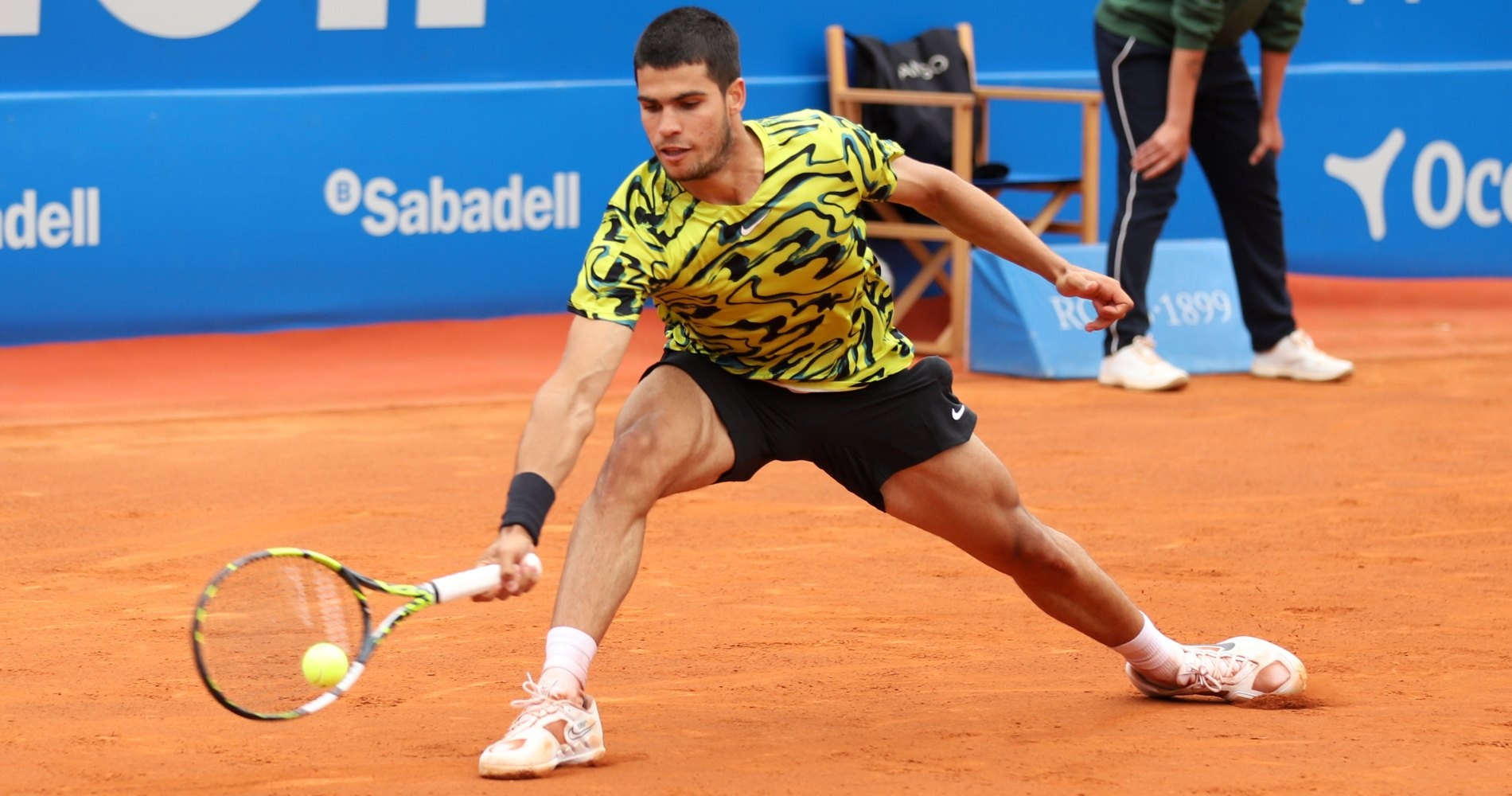
“Compared to a Nadal who is originally a pure clay-courter, even if he has learned to play well on other surfaces, I would say that Carlos is naturally an “all surfaces” player,” coach Patrick Mouratoglou explains, before adding: “But I will give him a little advantage on clay because he has a few weapons that are deadly on this surface: the drop shot, which he masters perfectly, his kick serve, which is one of the best if not the best on the circuit, and the forehand. Because on clay, you have more time to turn your backhand and hit more forehands. Without forgetting, of course, his incredible movement.”
We could add the monumental “spin” that he imparts with each of his strikes, another major characteristic of a legendary clay demon. In Madrid, where the slight altitude (657 m) generally alters the “spin” for the benefit of pure speed, the former (and soon to be) world number 1 was still producing an average speed of almost 3,000 revolutions/minute off the forehand side.
It is the second most violent forehand spin rate seen this season on clay, behind Casper Ruud who was the only one to cross the 3,000 mark in Monte Carlo, in conditions more conducive to that.
On the backhand side, on the other hand (1,868 rpm), Alcaraz is quite far from the scores established in Monte-Carlo by Richard Gasquet, Stefanos Tsitsipas and Ruud (around 2,500 rpm). But it must be said that the Spaniard uses his backhand differently from these players, looking less for height and angles than for tactical precision and pace. And, as Patrick Mouratoglou says, he also hits a lot more forehands.
All in all, the style of Carlos Alcaraz is quite similar – in a modern version – to that of his trainer, Juan Carlos Ferrero, who also hurt with his forehand and also used a lot of drop shots, at a time (late 90s-early 2000s) when this shot was however becoming rare, before coming back into fashion. But, like Nadal, Ferrero was first a raw clay-courter who then learned to play well on hard court, notably reaching the final of the 2003 US Open.
Carlitos, on the other hand, has made up ground illustrious rivals by shaping a perfectly well-balanced style from an early age, also in tune with modern tennis where the differences between the surfaces are less sensitive. Compared to a Ferrero who was lean and light of build, as many clay-court players were in the past, Alcaraz has developed a much more muscular, Nadal-like build, and ever more offensive tennis.
Qualities that should allow him to perform well on all types of clay: heavy clay, which requires a lot of power to penetrate the court (to be confirmed in Rome, where the we are expecting rainy weather); and a faster-playing clay court, as in Madrid, where big servers and power players are perfectly suited to the conditions, as we saw with the success of of Jan-Lennard Struff or even Aryna Sabalenka.
Today, it is only the grass that seems even less suitable for Carlos Alcaraz’s tennis, mainly because of a surface that requires very strong movement and balance, which is more complicated on grass. But given the rising Spaniard’s ability to learn and the completeness of his technical and tactical panoply, we don’t worry about him adapting to it one day.
We are not there yet: today, the great traveling circus of tennis has its feet firmly anchored in the ground. Carlos Alcaraz has one month and two big deadlines (Rome and especially Roland-Garros) to truly make it his kingdom.
